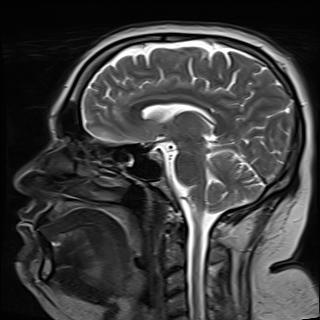Sort of similar to the Great Filter theory, but applied to time travel technology.
Or they know better than to visit the violent primitives.
deleted by creator
Pretty sure there is no absolute universal position, everything in the universe being in motion relative to everything else as the universe expands, but that does not disprove your point anyways.
The reason it doesn’t disprove it is because the assumption “time travel works” is really just saying, if we ignore some basic rules of physics, what happens to what’s left? It’s a nonesense premise to debate what is basically nothing more than science fiction.
Could the rules we know about the universe be wrong? Absolutely! But discovering those new rules is what will answer that question. Till then, we might as well try and say Harry Potter is just quantum mechanics.
Look up Dr. Ronald L Mallett. This astrophysicist has some interesting takes on practical time travel. There’s a great interview with him by Fraser Cain of Universe Today.
You can use the cosmic microwave background as a universal reference frame. Relative to that we move at about 370 km/s, depending on the time of the year.
Now I’m hurting my head by thinking about traveling faster than 370 km/s in the opposite direction to Earth…
For reference: Voyager 1 is traveling at 17 km/s away from the sun. The Parker Solar Probe should reach 191 km/s but will be flying towards the sun.
This is a basic fact overlooked by almost every time travel sci-fi. We wouldn’t just jump into a machine and poof be in the exact same location 1,000 years ago.
It would be more like trying to land a spaceship on a planet light years away, there would have to be calculations for position and gravity. All sorts of crap before you even solve the impossible problem of turning back the clock.
Also we’d first have to figure out how to travel faster than light to even hope to break the riddle of time travel.
As fun as it is to theorize time travel would be impossibly complex and probably devastating to try.
Imagine what an object would do with all those forces behind it suddenly slamming into a object moving much slower, it would be like a time bullet that would tear apart the planet and punch a hole in space. We would likely achieve a black hole and destroy all of earth before we could see what earth looked like 1,000 years ago.
This is a basic fact overlooked by almost every time travel sci-fi. We wouldn’t just jump into a machine and poof be in the exact same location 1,000 years ago.
It would be more like trying to land a spaceship on a planet light years away, there would have to be calculations for position and gravity. All sorts of crap before you even solve the impossible problem of turning back the clock.
If the only reason you find the premise of traveling through time preposterous is that they didn’t do the basic research to make it work, why not just assume they did? It’s a fictional world. Just go with it.
For many I assume the device provides some kind of space-time anchor relative to itself, so when you go through the magic door it’s already attached to itself on the other end. The “itself” on the other end doesn’t need to be the whole machine, just enough molecules or whatever to lock on to. I like this idea because 1, it still leaves room for error so it isn’t perfect and 2, I can stop thinking about it and enjoy the stupid movie.
The only theory I’ve seen that really holds any water is time travel going forward by using a ftl loop.
Have you noticed the flashing light in the sky? It started last year. It gets a little brighter every night. I only used to notice it when I was out of town, but now I can see it in the city. It blinks pretty quickly, probably twice a second. Some blinks are longer than others. If you watch long enough, it repeats. Short. Short. Short. Long. Long. Long. Short. Short. Short.
deleted by creator
Maybe it’s impossible to travel back in time?
If time travel is possible it’ll probably be limited to the lifeline of the time machine itself. You cannot travel back in time to a point prior to the invention of the first time machine.
GR predicts “closed time-like curves,” but they require weird conditions (an infinitely dense and infinitely long rotating string) or negative energy, and you can only ever travel to the start of the loop at the earliest.
Time isn’t really a thing, right? It’s just the chain of cause and effect, tied inexorably with space. There is only ever the present, the ever-shifting now. The past is a remembered state, the future is merely possible states.
Cause and effect happens more slowly or quickly due to relativity, but it doesn’t go backwards.
(Note, I am not a physicist.)
Location isn’t really a thing right? It’s just a chain of “over here” and “over there” tied inexorably with space. There is only ever “here”, the place you occupy while things move around you. Behind is places you have been, forward is places you might be.
Reading that formed an interesting question in my (also non-physicist) mind:
If we can, at most, take advantage of relativity to slow down our own time frame, then time could just be our way to describe the pace of how space changes around us following simple causality.
But if, on the other hand, it is possible to move backwards through time, wouldn’t the universe have to necessarily exist not only as a giant block of eternally changing 3D space, but as a giant block of 4D spacetime one could move around in? And would that mean predetermined past and future, or would that 4D block of spacetime change, too, advancing through meta-time, continually changing future and past of the universe?
ScienceClic has a cool video, stipulating that we live in 4D spacetime and are bound to always move forward at light speed. If we stand still in 3D space, we move forwards in time at light speed. If we accelerate in 3D space, we change out motion vector from only pointing forwards in time to pointing slightly sideways (up to completely sideways, i.e. time stops, if we were able to move at light speed). But there may be now way to do a 180 involving the time axis like we could do involving the other 3 axes.
Here is an alternative Piped link(s):
Piped is a privacy-respecting open-source alternative frontend to YouTube.
I’m open-source; check me out at GitHub.
Maybe they are afraid to come back because we are still savage cavemen and carewomen to them.
Time travel within the same universe is not possible, it is a fun fiction which is always contradictory in some way. The only time travel possible would be the one that William Gibson uses in The Peripheral. His idea is that every time you go back in time a new parallel universe is created, and it doesn’t impact your current universe because of that.
My theory is that we’re one of the most advanced species in our galaxy, and yet we still can’t reach another solar system. The probability of intelligent life forming from unintelligent life is extremely unlikely, and we had life on Earth for a LONG time before humans evolved. Intelligent life is very difficult to form, you need the perfect conditions and perfect stressors over millions of years. Then on top of that intelligent life which can reach another solar system is even less likely.
There’s life out there thinking the same thing right now:

One of my favourite theory about human evolution is the stoned ape theory. It delivers the conditions of the evolution. Apes were forced outside of the jungle and ventured into open field and had to depend on different nutrition. So they ate some mushrooms and eventually ate ones with psylocibin. Small amounts increase your eyesight - so you can hunt better, bigger amounts are very sexuall arrousing - so more reproduction :)
You don’t even need that hypothetical for it to make sense. Look up how chimpanzees fight against each other for territory. It’s survival of the fittest over millions of years, simple. Cold weather in the north, requiring the development of technology for survival, learning how to use fire to cook clean food, learning how to use alcohol to purify water, etc. We split from chimpanzees millions of years ago, and chimpanzees can only survive in very lush jungle areas because of the food sources they rely on, which is why they’re endangered.
Time travel within the same universe is not possible
Not exactly true. Technically, paradox free time travel would theoretically be possible.
As long as the time travel follows the Novikov self-consistency principle, there’s no need for parallel universes.
Essentially the type of time travel employed in Harry Potter and the Prisoner of Azkaban. So you wouldn’t be able to change anything, even if you did do things — as if you did something, it had always already been done previously (before you travelled back).
It is true, don’t waste my time.
“it’s a fun fiction which is always contradictory in some way” <-- that is not true.
General relativity allows for closed time-like curves and the existence of those means time travel isn’t necessarily impossible, and if that is the case, it has to abide by the Novikov self-consistency principle.
Willfull ignorance wastes only your own time.
In that case time travel would be meaningless regardless, impossible to prove, and doesn’t matter.
Dumbledore disagrees. The type of timetravel that happens in HP: Prisoner of Azkaban is self-consistent. Same as with Rick’s timetravel in the snake episode of Rick & Morty (specifically excluding the snake time travel, which is an example of non-consistency, leading to endless paradoxes).
Now ofc having a timeturner and/or a timemachine would be the impossible part there, but again, CTC’s are technically allowed by GR.
Or it’s because we don’t have time machines yet. It’s like making a phone call when you have the only phone in existence.
Imagine creating the first functional time machine only to have a shitton of time travelling tourists appear in it the second you turn it on
Exactly. We can still only send a single gel banana back in time until we invent proper time machines.
My favorite depiction of time travel tech is Primer. Assuming you figure out the time travel part itself, I can imagine a time machine that can take you all the way back to the moment it was switched on. Any other mechanism has introduces way more issues that time travel alone.
I prefer the theory of “OMLY FORWARD!”
Basically, you can only travel forwards in time because going backwards violates causality
However
Because of the possible 4th dimensional geometry of the universe and what that means for how it behaves over deep time intervals, it could theoretically be possible to go so far forward you end up back in time.
This possibility relies on the accuracy of the theory of the bang and crunch cycle, which basically states that the universe is a bubble of infiniteness and that if you figure out how to ride out a big crunch and following big bang, you can just keep fast forwarding infinitely until random happenstance takes you far enough forward in time to a universe that is identical to ours except you’re arriving to a point that is identical to one that was “back in time” from where you started.
It’s probably one of the more depressing takes on time travel since it’s impossible to ever go “home” but then again in that sense you’ve never returned to the home you left from in the morning, because the one you return to exists forward in time from where you left.
There is a great Futurama episode that visualises this. The Late Philip J. Fry - Futurama S06E07
There’s a hard sci-fi novel (1970s or 1980s) called “Tau Zero” that features this idea.
Book summary (spoils all of it)
A colony ship with a Bussard Ramjet on each end (debunked theoretical spaceship drive that uses interstellar hydrogen for propulsion, i.e. the faster you go, the more medium you hit and the harder you accelerate) suffers an accident that destroys the deceleration engine. They keep accelerating because they need the engine’s magnetic field to protect them from interstellar dust. First they try reach the void between galaxies to safely repair the ship, when the interstellar medium is still too “dense,” they go for the void between galaxy clusters, then superclusters, then they just stay on the throttle until the big crunch, at which point, in the nothingness after the universe collapsed in on itself, they can finally fix their ship and begin decelerating into the bounce-back big bang of the forming next universe and colonize a planet.
The universe seems to be keyed to disallow time travel. The speed of light limit, in relativity, is sat exactly at the limit where time travel would become possible. Conversely, quantum mechanics does allow for FTP transmission. What it doesn’t allow is information to flow along those links. It’s hit with a 0.5 error rate, which completely blocks FTP communication.
General relativity does allow for a few time travel options. However, these are sat well off in the sticks, where quantum relativity would dominate. Since we don’t have such a theory yet, our predictions are likely wrong. Even within these theories, a time machine would require a “closed timelike curve”. These can, in theory be made using several rapidly rotating black holes. Any ship traversing it, would never be able to leave before the time machine was built.
Basically, time travel is almost certainly blocked by our laws of physics. Any loopholes would be limited to the lifetime of the “machine” and would require stellar level engineering for even a few seconds of travel.
As I understand, the FTL “transmission” in quantum entanglement is equivalent to just ripping a photograph in half, sticking the halves into envelopes and sending one of them to Australia.
By measuring the envelope you kept, i.e. opening it and seeing which half is in it, you gain instant knowledge, what the other half in Australia is.
This is mostly useless for communication, though, because the person in Australia does not get this information instantly.In the case of quantum entanglement, the photograph halves are a particle, which has decayed into two particles, each of which have kept a shared property, like a spin of -1 and +1 respectively.
This is the hidden-variables hypothesis and specific tests were made to check for it. See https://en.m.wikipedia.org/wiki/Bell's_theorem
Quantum mechanics does not allow for FTL transmission. Disallowing information flow is the same as disallowing transmission.
It seems to allow it, in a sense. The errors are also left on the transmission end. By transmitting them normally, the 2 signals can be combined to recreate the data. Something is shared, at some point.
It’s definitely a “we’re not sure what’s actually going on” type situation though. Either both ends are drawing on some (otherwise) hidden data layer, or FTL transmission is allowed, so long as no information flows (information as defined by quantum mechanics). It just turns out that weird entanglement based systems are the only ones (we’ve found so far) able to send infomationless transmissions.
Both solutions would give deeper insights into reality, and its underpinnings. Unfortunately, we’ve not actually teased out which is happening.
My gut feeling is that the speed of light is a side effect of a fixed/stable causality across all rest frames. Hidden information seems to be a lot more cumbersome.
I’m not sure what you mean. If something is “shared”, but this something contains no information, how can we know that it was shared? In what sense does this something even exist?
The perfect correlation of entangled particles is well established, and very cool, but perfect correlation does not require sharing of “something”. The perfect correlation is baked into the system from the start, from local interactions only.
The 2022 nobel prize was given to experimentalists that observed the violation of Bell’s inequality.
https://en.m.wikipedia.org/wiki/Bell's_theorem https://en.m.wikipedia.org/wiki/Quantum_nonlocality
I’m genuinely not an expert but I get it to mean that there aren’t hidden variables created alongside the entangled particles.
That’s actually not quite accurate, although that is how it is commonly interpreted. The reason it is not accurate is because Bell’s theorem simply doesn’t show there is no hidden variables and indeed even Bell himself states very clearly what the theorem proves in the conclusion of his paper.
In a theory in which parameters are added to quantum mechanics to determine the results of individual measurements, without changing the statistical predictions, there must be a mechanism whereby the setting of one measuring device can influence the reading of another instrument, however remote. Moreover, the signal involved must propagate instantaneously, so that such a theory could not be Lorentz invariant.[1]
In other words, you can have hidden variables, but those hidden variables would not be Lorentz invariant. What is Lorentz invariance? Well, to be “invariant” basically means to be absolute, that is to say, unchanging based on reference frame. The term Lorentz here refers to Lorentz transformations under Minkowski space, i.e. the four-dimensional spacetime described by special relativity.
This implies you can actually have hidden variables under one of two conditions:
- Those hidden variables are invariant under some other framework that is not special relativity, basically meaning the signals would have to travel faster than light and thus would contradict special relativity and you would need to replace it with some other framework.
- Those hidden variables are variant. That would mean they do indeed change based on reference frame. This would allow local hidden variable theories and thus even allow for current quantum mechanics to be interpreted as a statistical theory in a more classical sense as it even evades the PBR theorem.[2]
The first view is unpopular because special relativity is the basis of quantum field theory, and thus contradicting it would contradict with one of our best theories of nature. There has been some fringe research into figuring out ways to reformulate special relativity to make it compatible with invariant hidden variables,[3] but given quantum mechanics has been around for over a century and nobody has figured this out, I wouldn’t get your hopes up.
The second view is unpopular because it can be shown to violate a more subtle intuition we all tend to have, but is taken for granted so much I’m not sure if there’s even a name for it. The intuition is that not only should there be no mathematical contradictions within a single given reference frame so that an observer will never see the laws of physics break down, but that there should additionally be no contradictions when all possible reference frames are considered simultaneously.
It is not physically possible to observe all reference frames simulatenously, and thus one can argue that such an assumption should be abandoned because it is metaphysical and not something you can ever observe in practice.[4] Note that inconsistency between all reference frames considered simulatenously does not mean observers will disagree over the facts, because if one observer asks another for information about a measurement result, they are still acquiring information about that result from their reference frame, just indirectly, and thus they would never run into a disagreement in practice.
However, people still tend to find it too intuitive to abandon this notion of simultaneous consistency, so it remains unpopular and most physicists choose to just interpret quantum mechanics as if there are no hidden variables at all. #1 you can argue is enforced by the evidence, but #2 is more of a philosophical position, so ultimately the view that there are no hidden variables is not “proven” but proven if you accept certain philosophical assumptions.
There is actually a second way to restore local hidden variables which I did not go into detail here which is superdeterminism. Superdeterminism basically argues that if you did just have a theory which describes how particles behave now but a more holistic theory that includes the entire initial state of the universe going back to the Big Bang and tracing out how all particles evolved to the state they are now, you can place restrictions on how that system would develop that would such that it would always reproduce the correlations we see even with hidden variables that is indeed Lorentz invariant.
Although, the obvious problem is that it would never actually be possible to have such a theory, we cannot know the complete initial configuration of all particles in the universe, and so it’s not obvious how you would derive the correlations between particles beforehand. You would instead have to just assume they “know” how to be correlated already, which makes them equivalent to nonlocal hidden variable theories, and thus it is not entirely clear how they could be made Lorentz invariant. Not sure if anyone’s ever put forward a complete model in this framework either, same issue with nonlocal hidden variable theories.
Indeed. I’m not completely sure what point you are trying to make, but my point is not a hidden variable point. The states can be in a perfectly correlated superposition without any hidden variables, and still not “share anything” upon collapse into an eigenstate.
I will concede that it looks a lot like one particle somehow tells the other “hey, I just collapsed into the |1> state, so now you need to as well”, but at a closer look this seems to happen on its own without any such message being shared. In particular, while the collapse of one state causes the collapse of the other, there is no physical way to distinguish between a state that was collapsed due to entanglement, and one that wasn’t. At least not until you send a sub-FTL signal to explain what happened.
So if physically, the state of particle 1 before and after particle 2 was measured is indistinguishable, how can we say that “something” was shared from particle 2 to particle 1?
I mean you can setup a source of entangled particles and two very far detectors that would do measurements roughly at the same time on each particle in such a way that information traveling at the speed of light wouldn’t have time to travel the distance between both detectors.
You can then just gather roughly simultaneous measurements and at a later time join the datasets from both detectors to see what one measured vs the other for each pair.
If I understand correctly the current observations show that collapsing the state of one of the particle influences the other all the way at the other detector. Since there’s no hidden variables that predetermine the result of measurements while the result of the collapse is random, and the fact that particles still respect the correlation over any distance is why there seem to be a FTL communication between the particles.
Something has to be communicated between the particles for the influence to work FTL, but it also seem we cannot leverage this phenomenon to send “actual information” this way :/
edit: Important point with that experiment: once the particles have been observed, if you try the experiment a second time using the same particles, then you’ll get different results, this time in line with hidden variables because the particle’s state already collapsed.
I fully understand the concept of entanglement and the experiments you mention, but I’m still to understand what you mean when you say “something” is being transmitted between the particles.
As you say, this “something” cannot contain information, and it also cannot influence the particle physically, since there is no way to distinguish the physical state of the particle before and after it receives this “something”. So the signal contains nothing, and has no effect on physical reality. That sounds a lot like “nothing” rather than “something”.
I completely get the argument that somehow the two particles must agree on what result to give, but in the theory this is just a consequence of how entanglement and measurements work. No transmission required.
Either both ends are drawing on some (otherwise) hidden data layer
Sounds like subspace
I believe the only viable timeline is the one where time travel is never invented because if you create the machine to go back to prevent something happening then there is no need to create the time machine.
Which yes is an actual paradox
That’s why the reason for inventing the time machine is “just in case”
Unless the time machines end up being restricted in travel only to the times after they’re built. Which would resolve the paradox
Ex: The movie Primer. A good time-travel idea in a bad movie.
A great movie.
Basically everytime you go back it will make changes to the future in such way you don’t exist thus the time machine by its very nature can never be discovered. Everyone that does immediately erases their future self from existence.
I’ve never been motivated to create a time machine, but you’ve suddenly made it extremely appealing…
Back to the Future had an extremely convoluted time travel theory that didn’t actually make sense, but one interesting idea they sparked is that you create branching timelines when you go back to the past. Meaning your present timeline remains unaltered, but you basically skip to a new reality when you time travel. Essentially, they claimed the multiverse exists and you travel across dimensions, not necessarily time, when you used the Delorean.
Maybe this is why we never meet time travelers. Because our current universe is an unaltered world and any time traveling that happens here just sends people to other universes instead of our established timeline.
This theory is kind of nightmare fuel when you consider Doc and Marty left Marty’s girlfriend on her porch in a dark future and just expected her to be there when they “fixed” the timeline. Nah, bro. You just abandoned her in the darkest timeline. The girl you picked up was an alternate reality version of her.
*EDIT: Back to the Future, not Bank to the Future.
Doc does draw that on the board, but the movie doesn’t follow that logic. It’s strictly a cause effect type of time travel.
The movie doesn’t really follow they though. Otherwise why did Marty start disappearing.
That’s why I said their time travel theory doesn’t make sense. The movie doesn’t even follow its own logic.
Or the timeline they are from is not our timeline
Isn’t there some theory that says the reasons why we don’t see advanced civilization is because they destroy themselves with technology.
Yep. Look up the Great Filter theory.
The future doesn’t exist, and the past is inaccessible to our Temporality.
Or they’re the things 99% of people are calling ‘aliens.’
Why an interstellar species would travel light years to come to this pale blue dot in ships that don’t really interfere and look like our own just a few hundred to thousand years more advanced is kind of hand waved away.
But if those sightings are in fact accurate, it sure seems like our narcissistic species would be pretty interested in our past selves once the tech existed.
If invincible has taught me anything, it’s that the aliens are here because they want to fuck
Every civilization has its Captain Kirk.
maybe they don’t visit us because we never call or text
If you were a historian with a time machine doing original research for your doctoral dissertation, you’d probably prioritize visiting the most poorly-documented eras first—the Information Age would be at the very bottom of your list.
Future historians could have infinite time. We could get grad students a thousand years after time travel is invented. Of course, they could be sneaky.











